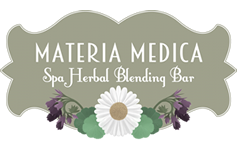What are they?
Most of us have seen this word on the front of a shampoo, facial cleanser, moisturizer, etc. but what exactly do we know about them?
Parabens are used, since the 1920’s, as synthetic preservatives in cosmetics, food and body care products. Designed to decrease the risk of mold and bacterial growth in products with high water content. Then, in the 1970’s propylparaben was declared “generally recognized as safe” for food and beverage products. Most of us have been exposed to these compounds, but are they really safe?
How are they harmful?
Like most things pertaining to our health, there are conflicting studies and evidence to show how truly harmful parabens are. What is known is when these chemical compounds are ingested or applied topically to the skin, they disrupt our endocrine system by mimicking our hormones. This video explains this disruption beautifully, if you’d like to learn more.
Having long term exposure from multiple sources containing these synthetic compounds, which act like our hormones, can easily disrupt the natural rhythms of our body and potentially lead to serious health concerns. More research is needed but current health risks range from how our body responds to psychological stress, thyroid issues, reproductive health up to cancer.
There are also studies available that are disproving the common argument that parabens naturally exist in certain foods, wine and fruit juices. So, I have provided links below if you’d like to geek out more on this.
How do we avoid them?
The CDC states on their website that, ‘In 2006, the industry-led Cosmetic Ingredient Review (CIR), in a partnership with the FDA, determined that there was no need to change the original conclusion from 1984 that parabens are safe for use in cosmetics.’
Until we are able to shift the perspective of ruling government agencies, we can take matters into our own hands, by simply looking at the ingredient label. The most common parabens to look for are methyl-, ethyl-, propyl-, isopropyl-, butyl- and isobutylparaben, listed as such.
Before you purchase ANY product, food or cosmetic, take a moment to glance at the FULL ingredient label. DO NOT take only the information given to you on the front of the box or product, this information is often misleading.
Conclusion.
Thank you for watching my video! Be on the look out for more topics, like this one, in my series ‘Deconstructing Skincare. Together we can make the shift toward better health and clean beauty.
Resources:
*https://www.ewg.org/enviroblog/2015/07/myth-natural-parabens
*Journal of toxicology; https://doi.org/10.1002/jat.1358
*Environmental Health Perspectives; https://doi.org/10.1289/ehp.1510514
*Environmental Working Group; https://www.ewg.org/californiacosmetics/parabens
*https://www.ewg.org/research/exposing-cosmetics-cover-up#cosmeticssafety


